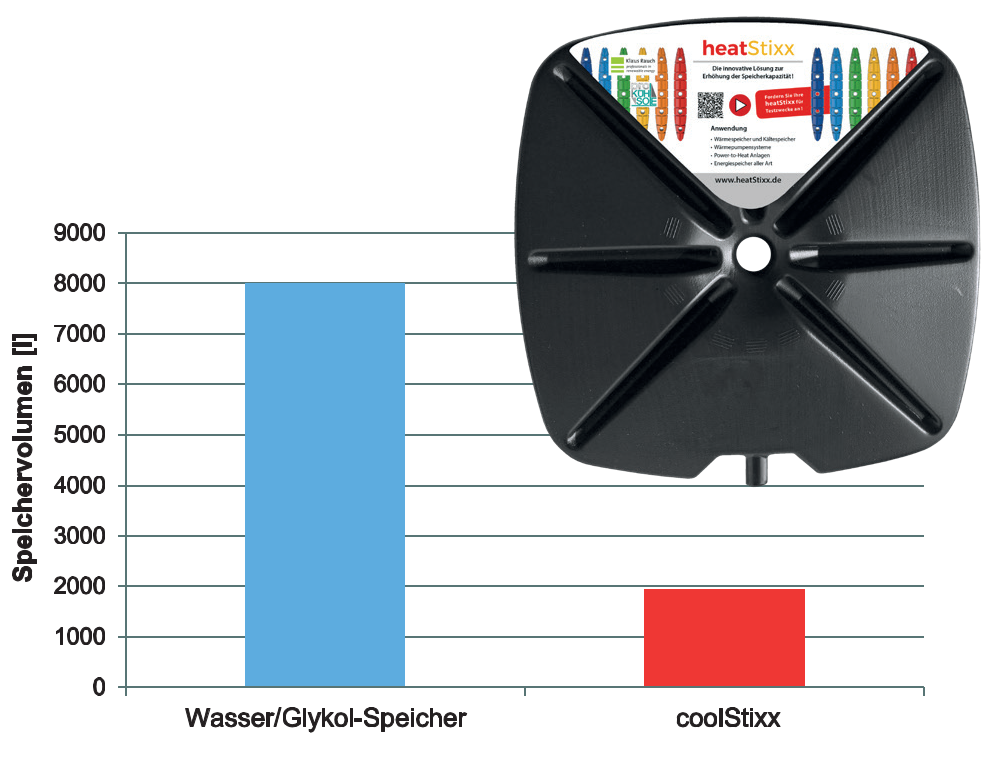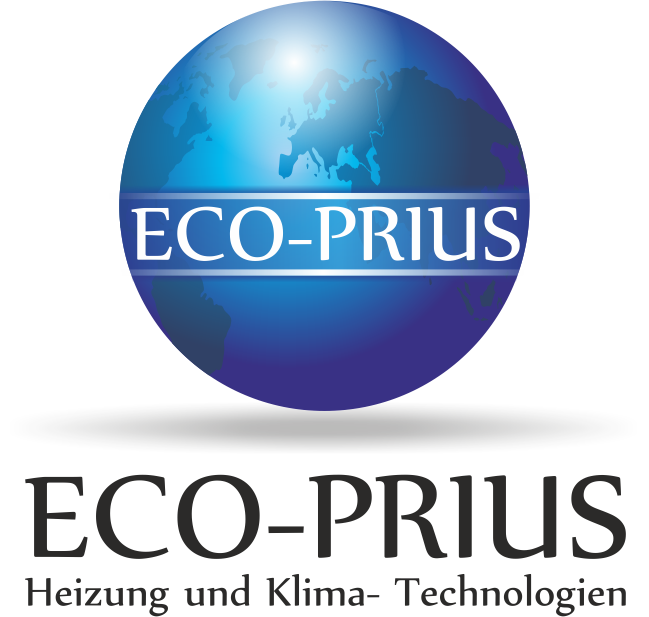Heat and Cold Storage with PCM (Phase Changing Materials) - Materials with Variable Phase Structure (Liquid - Solid)
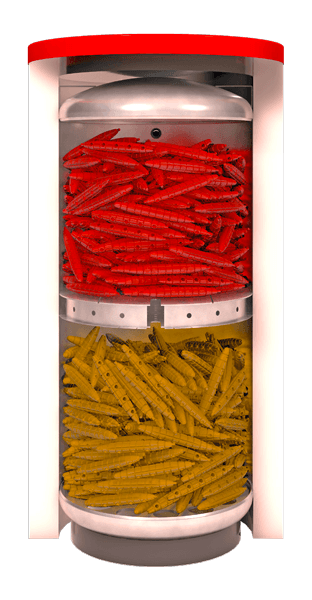
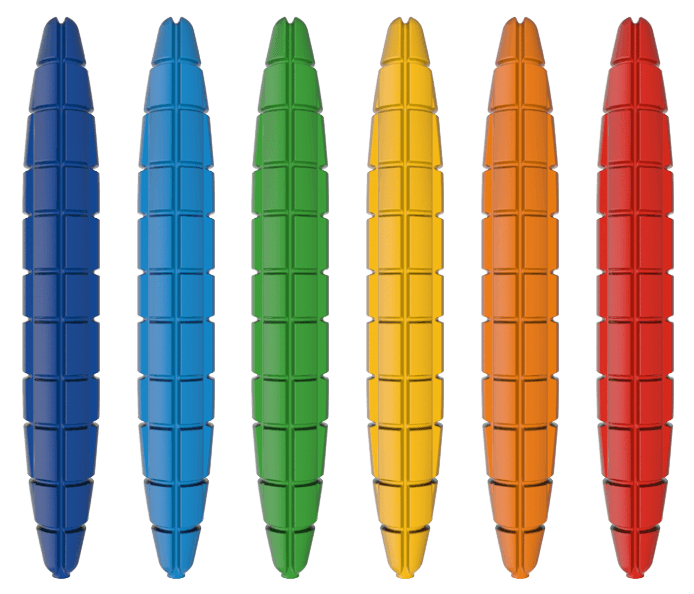
Phase Change Materials (PCMs) are designed to absorb and release large amounts of thermal energy at constant temperatures. Over 30 organic (ATP) and inorganic (ATS) high-performance PCMs cover temperatures ranging from -40°C to 120°C. Further melting temperatures can be developed for specific applications upon request!
Key features of PCMs include:
- High heat storage capacities
- Consistent, repeatable performance over thousands of thermal cycles
- Simple and safe handling
Produced from renewable resources, non-toxic, and biodegradable.
PCMs are available in a special housing in the form of macrocapsules with an optimized surface-to-mass ratio for faster energy exchange and better performance in practical applications.
Innovative Solution for Increased Storage Capacity
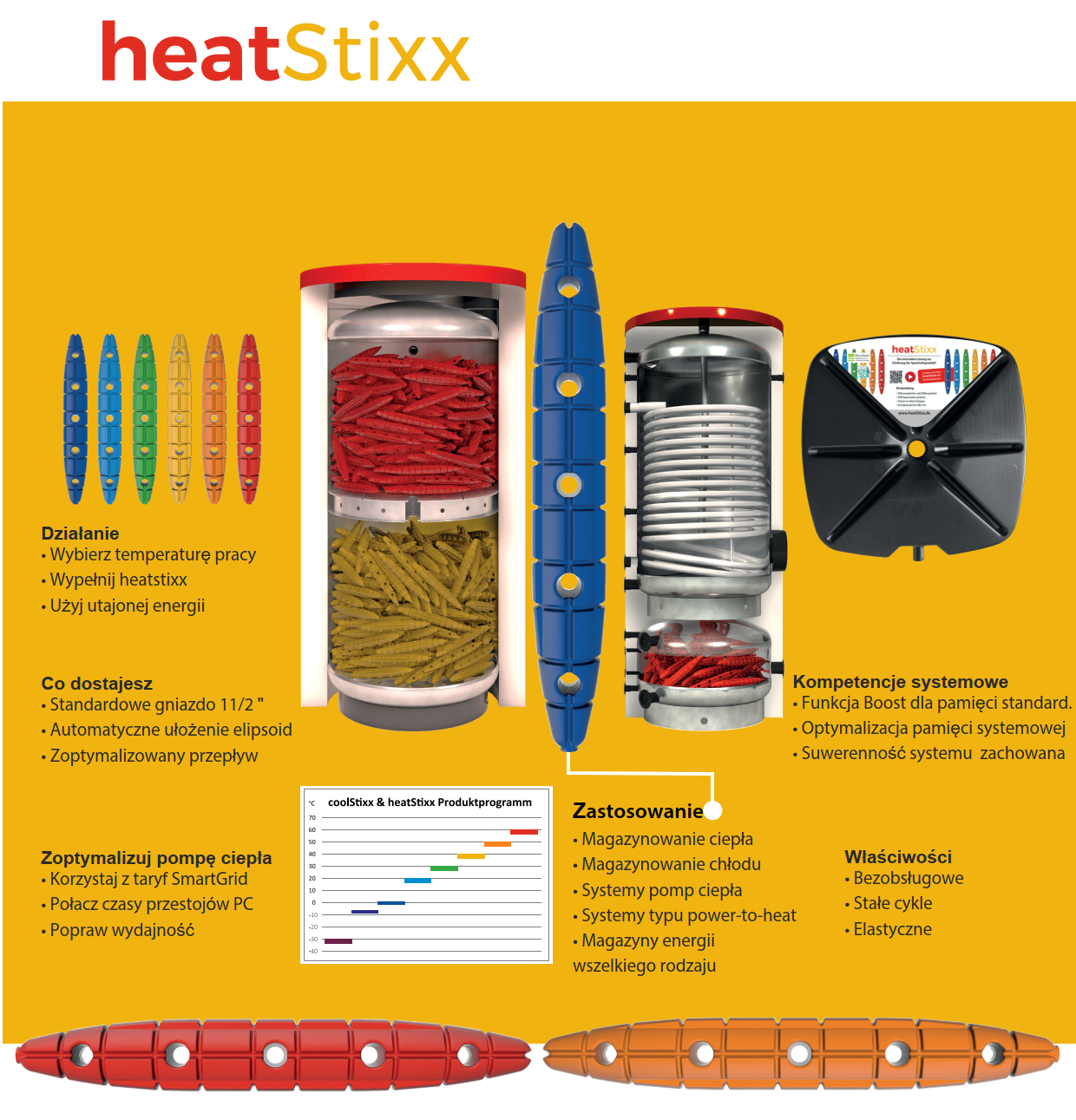
Range of Phase Change Temperatures for PCM
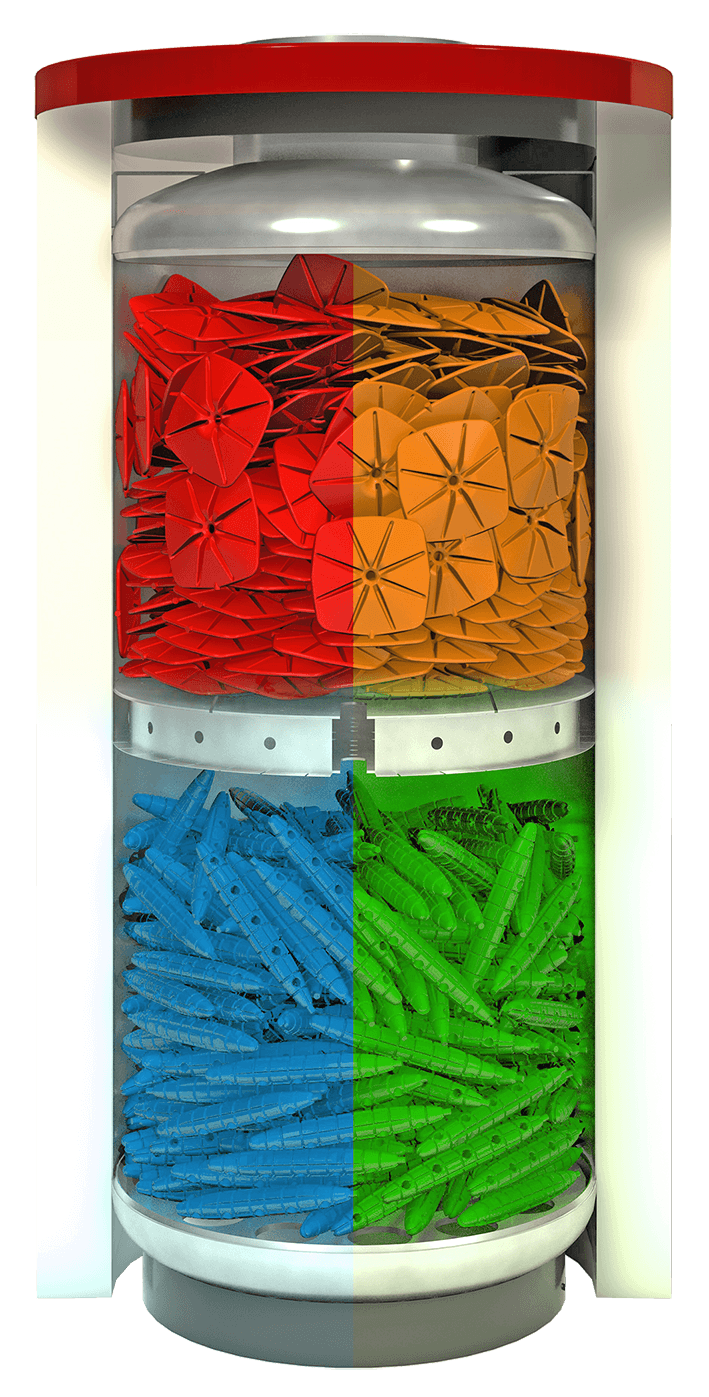
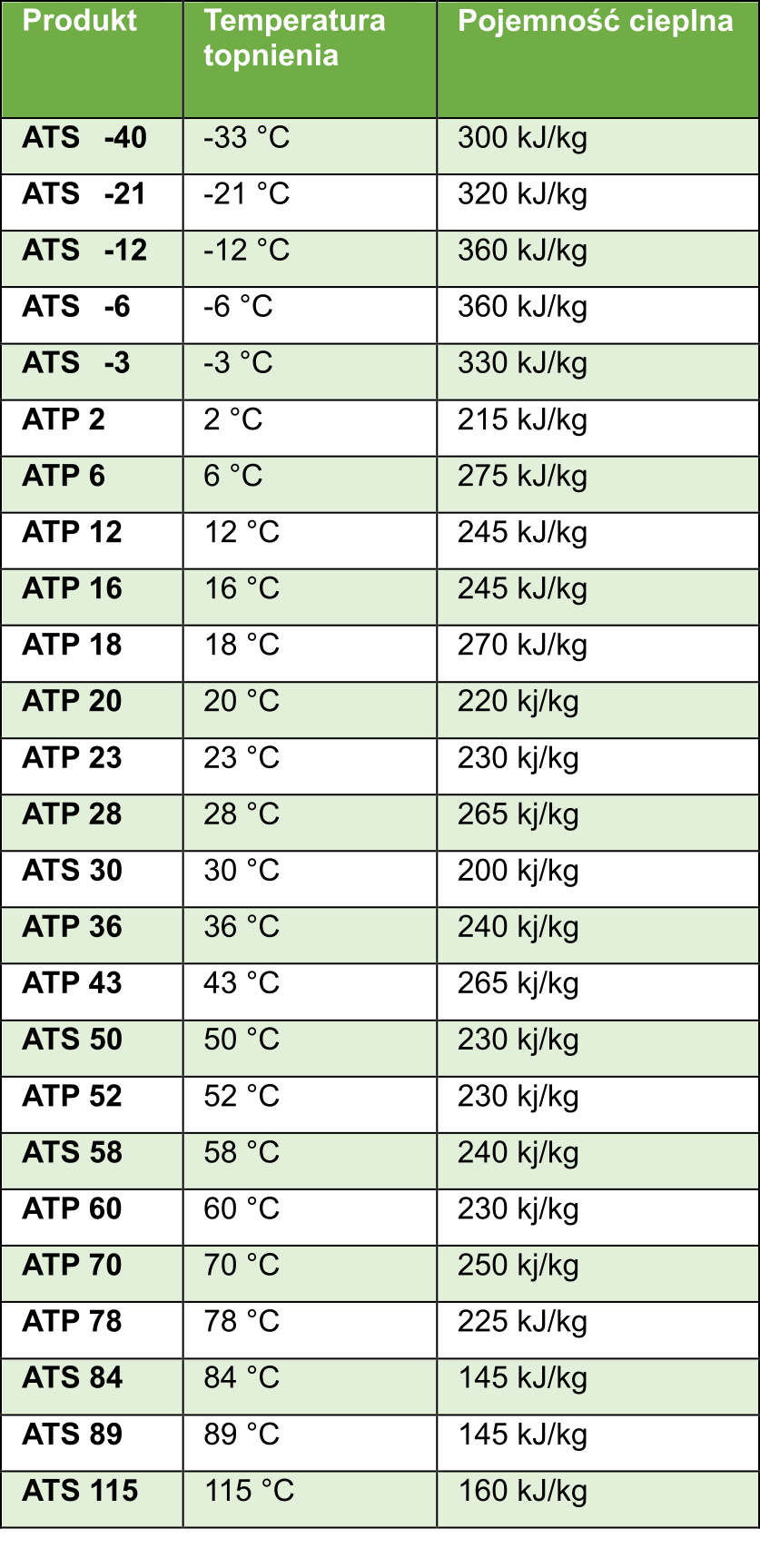
Basics of Latent Heat Storage Technology
It is known that in today's world, efficient energy utilization plays an increasingly important role. Our world has developed a habit of having enough energy "on demand" from finite resources (oil, coal, etc.) or from increasingly outdated models (nuclear energy). However, this luxury burdens the environment - it unnecessarily requires large energy reserves, increases CO2 emissions, and imposes additional burdens on the environment due to the production, transportation, and disposal of these energy sources. It provides us with access to enough energy, but the problem is that supply and demand are often not balanced over time. Such differences can be measured from minutes (e.g., in production) to hours.
It is different in the case of demand for solar thermal energy, which is delivered during the day but is underutilized, dramatically increasing at night. This is where the issue of storage, for example, in phase change, comes into play. Significant applications of phase change can be found in fuel cells, heat pumps, cogeneration plants, and others. Storage is crucial due to the numerous variable energy sources (thermal, electrical) that have emerged as a result of energy reform. The following perspective focuses particularly on the storage of thermal energy.
PCM Latent Heat Storage Technology
Latent storage is based on the principle of phase changes of a suitable material (PCM => phase change material). If this material is in a solid state (crystalline) and heat energy is supplied to it, the temperature of the PCM rises until it begins to melt. This is the point at which the phase change begins. During this process, intermolecular bonds are thermally broken, causing the PCM to liquefy. From this point on, the PCM begins to absorb heat energy without increasing its temperature. The heat energy is stored in the form of latent heat. This stored energy can be discharged (the material solidifies again) when the surrounding temperature decreases, releasing the stored energy in the form of sensible heat (temperature increase).
PCM technology is not only a key technology for renewable energy sources (e.g., solar, wind), but it can also be used effectively in combination with energy generation systems (e.g., combined heat and power units, heat pumps, waste heat recovery, etc.) and energy conversion (e.g., heating, cooling, drying, etc.).
PCMs are mainly used in so-called latent heat accumulators, which are devices for storing and releasing heat. This makes them an ideal tool for aligning supply and demand in energy management. The economic advantage of this system is that the amount of stored energy is not directly dependent on the volume, but mainly on the phase change enthalpy of the material used (kJ/kg). This makes it possible to store or release a large amount of energy in a small space with a relatively small amount of material.
The advantage of PCM technology is that it enables the integration of energy storage into existing processes (e.g., building construction), reducing or avoiding additional investments in infrastructure. PCM accumulators can be used to optimize the operation of thermal devices, increase efficiency, and reduce energy consumption and CO2 emissions.
ATP - Paraffins
- Available in various temperature ranges
- Stable cycles
- Integrable
- Storage capacity > 70 Wh/kg (250 kJ/kg)
- Low heat sensitivity (0.5 Wh/kg - K)
- Weak or no cooling
- Low density (approx. 0.74 kg/l)
- Low storage density 50 Wh/l (185 kJ/l)
- Low thermal conductivity (0.2 - 0.4 W/m - K)
- Flammable
ATE - Esters
- Available in multiple temperature ranges
- Stable cycle
- Integrable
- Storage capacity > 60 Wh/kg (220 kJ/kg)
- Low heat sensitivity (0.5 Wh/kg - K)
- Weak or no cooling
- Low density (approx. 0.84 kg/l)
- Low storage density 50 Wh/l (185 kJ/l)
- Low thermal conductivity (0.2 - 0.4 W/m - K)
- Flammable, but slightly higher ignition temperature
ATS / PKS - Salts and Salt Hydrates
- Available in selected temperature ranges
- Stable cycle
- Storage capacity 40 - 90 Wh/kg (180 - 320 kJ/kg)
- Higher heat sensitivity (0.8 - 1 Wh/kg - K)
- Low cooling
- High density (1 - 1.7 kg/l)
- High storage density 60 - 90 Wh/l (200 - 320 kJ/l)
- Higher thermal conductivity (0.4 - 0.6 W/m - K)
- Non-flammable
Main PCM Phase Change Temperatures
HeatStixx and HeatSel are available for various phase change temperatures. This includes a very wide range of applications and possibilities for storing heat and cold. The diagram below shows our most popular materials.

How to Select the Right Phase Change Temperature for PCM
Phase change always occurs at a specific temperature. However, to achieve this, there must be a specific temperature drop from the heat transfer medium to the PCM, i.e., from ambient temperature to the phase change temperature.
This is important for both energy consumption and production. Therefore, the PCM phase change temperature should be chosen to be between the minimum and maximum temperature of the system at each point of the system's operation.
If you typically operate the tank at temperatures from 40°C to 60°C, the optimal PCM temperature should be around 50°C.
Your tank will then continue to discharge at 40°C and fully charge at 60°C, but this process will take much longer. This allows for the storage of significantly more energy.
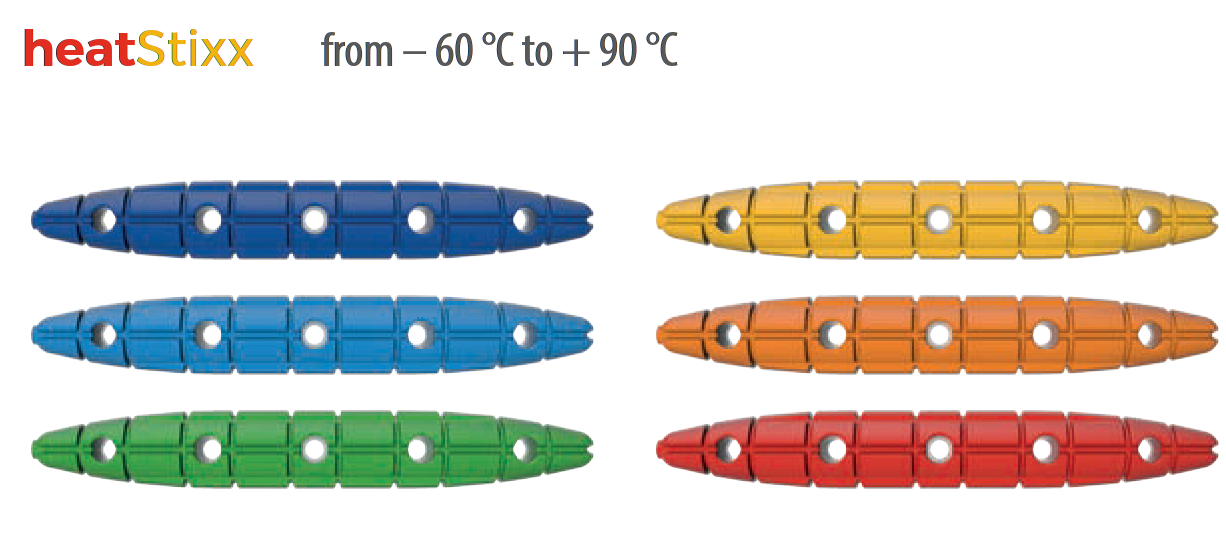
Installation in the heatStixx tank through a 1½" connection
Application options: In smaller storage tanks, standard heating systems, private households, tanks up to 1000 liters, as well as in optimizing existing tanks
Potential applications: Cold storage, heat storage
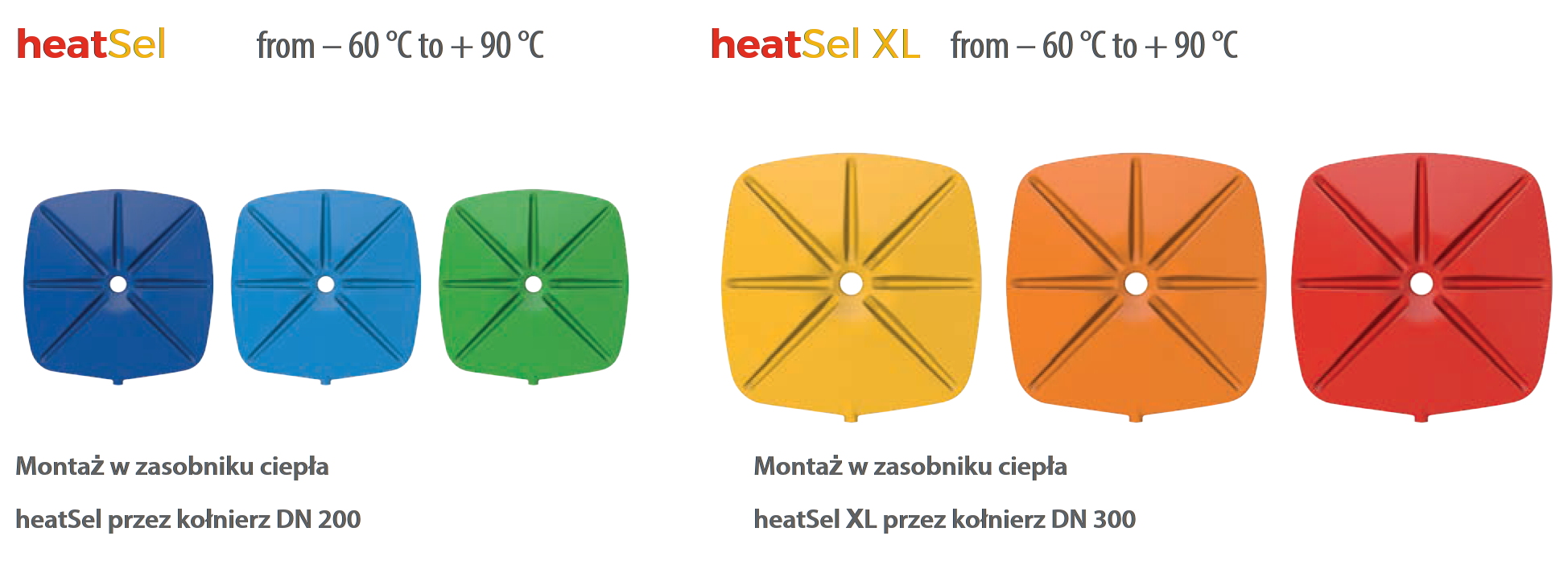
Application options: In large heat storage tanks HeatSel up to 2000 liters and in HeatSelXL tanks up to 20000 liters, optionally also for existing tanks.
Potential applications: Cold storage, heat storage.
Charging and Discharging of PCM Buffer Tank - Melting Temperature 58°C
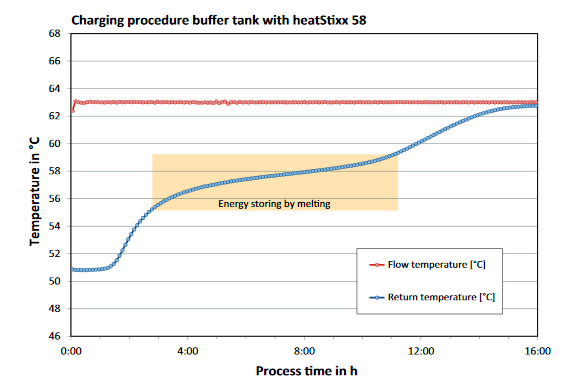
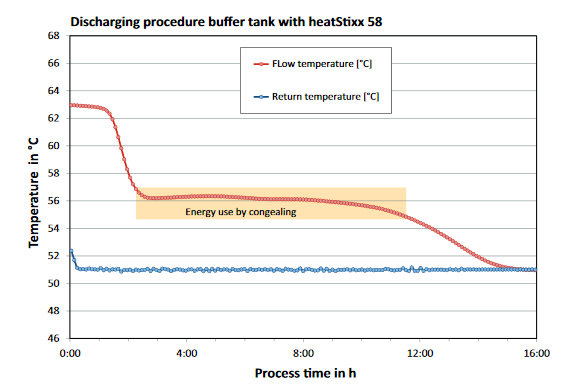
How Much Heat Power Can You Utilize?
When the tank is fully charged, the amount of heat capacity you can extract from or store in the tank is limited by three variables:
- The temperature difference between the phase change temperature and the system return temperature
- The size of your storage tank
- The volumetric flow rate of the system
In the performance diagram, you can see the output data you can achieve or store.
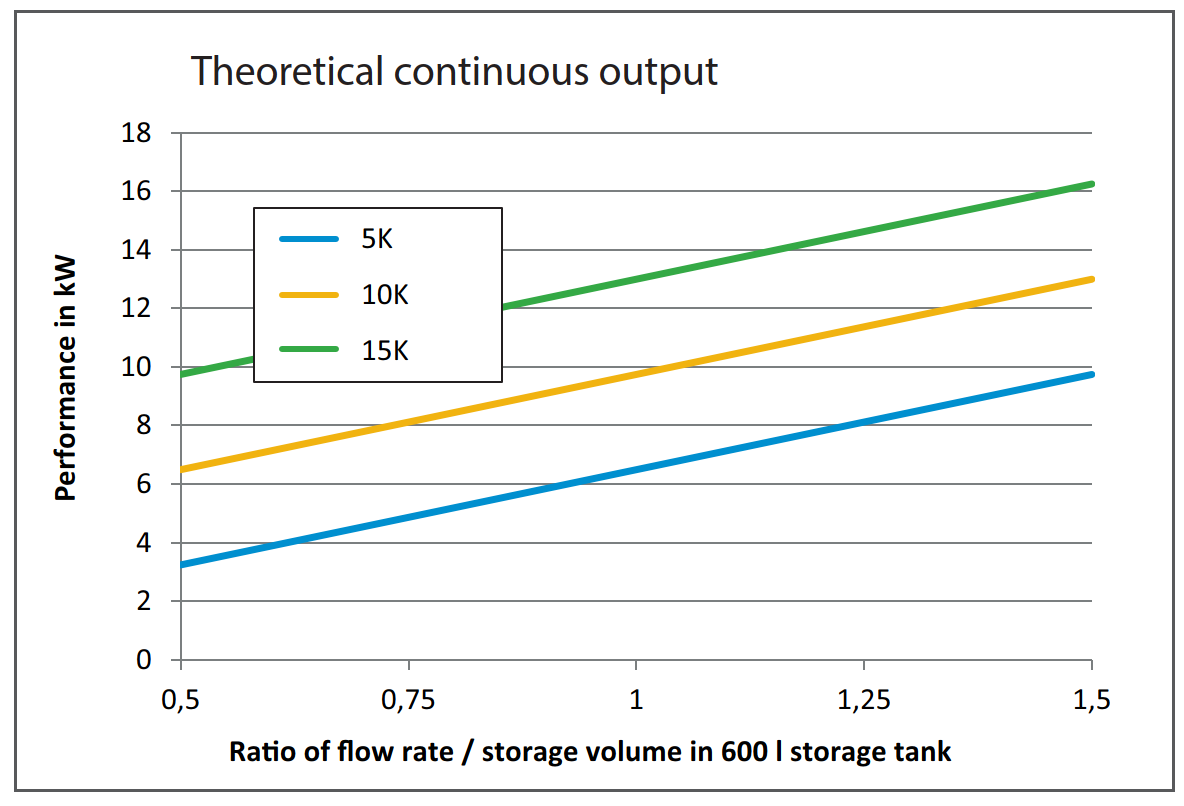
Example heating application:
- Size of the storage tank: 600 l
- Volumetric flow rate 900 l/h
- Volumetric flow rate to storage tank size ratio: 1.5
- PCM phase change temperature: 58 °C
- Return temperature to the tank: 53 °C
- Delta 5 K: Blue line on the diagram
- This results in a possible continuous output of approximately 9.8 kW
In addition, it is important to not exceed a volumetric flow rate to tank size ratio of 1.5 to achieve continuous output. Of course, higher outputs can also be achieved in a short time, e.g., through domestic hot water stations.
Applications of PCM Heat Storage
- Heat storage
- Cold storage
- Heat pump systems
- Combined heat and power (CHP) systems
Optimizing Heat Pump Operation
- Enables the use of SmartGrid tariffs
- Combines heat pump downtime
- Increases heat pump efficiency
Kraft Boxx Heat Center
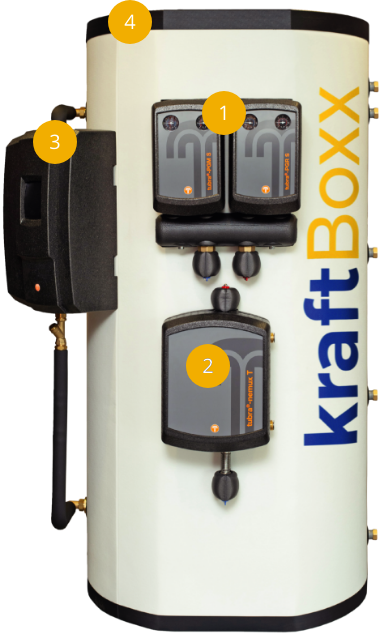
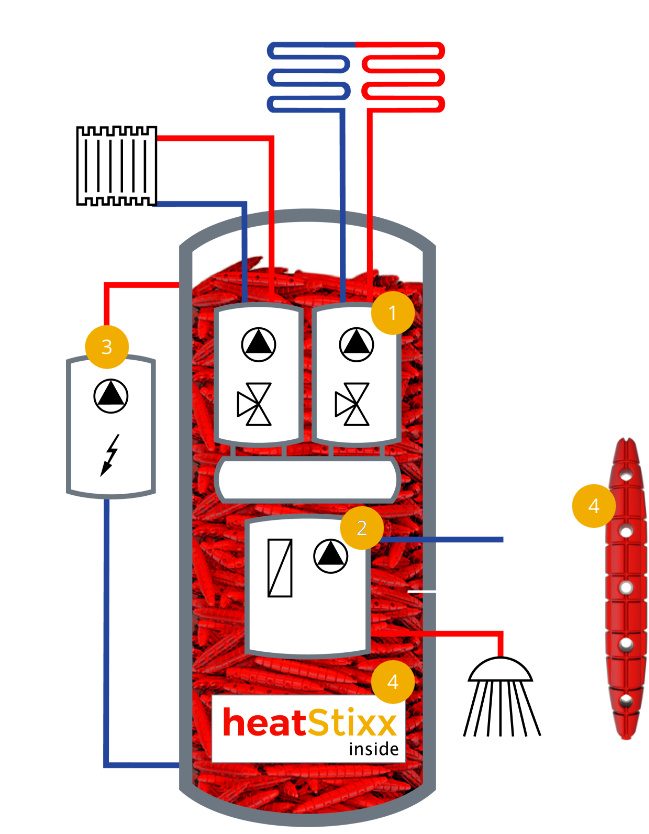
- Circulating heating circuit - Pump group for mixing - Heating circuits, power range up to 45 kW
- Freshwater station - 3 models up to 41l/min
- Power to heat - Electrothermal station
- Macro capsules with PCM - storing latent heat
Advantages of PCM Storage
- Increased storage capacity - From 3 to 4 times without changing the volume (available retrofit solutions)
- Reduced tank volume - Factor of 3-4 with stable capacity (and minimal space requirements)
- Operational cost reduction - Lowering peak values (in relation to nominal power) to use cheaper electricity tariffs (e.g., night tariffs) and internal supply
- Increased efficiency - Constant temperature level raises the COP coefficient and reduces heat losses (operational costs - 40%!) and allows for the installation of smaller heating and cooling devices.
- Extended product life cycle - Continuous operation at optimal levels by reducing work phases, including extended downtime and minimizing system maintenance efforts
- Simplified processing - By converting temperature peaks into phase change, resulting in consistent levels of charging and discharging temperatures and the chance for use as a thermal switch.
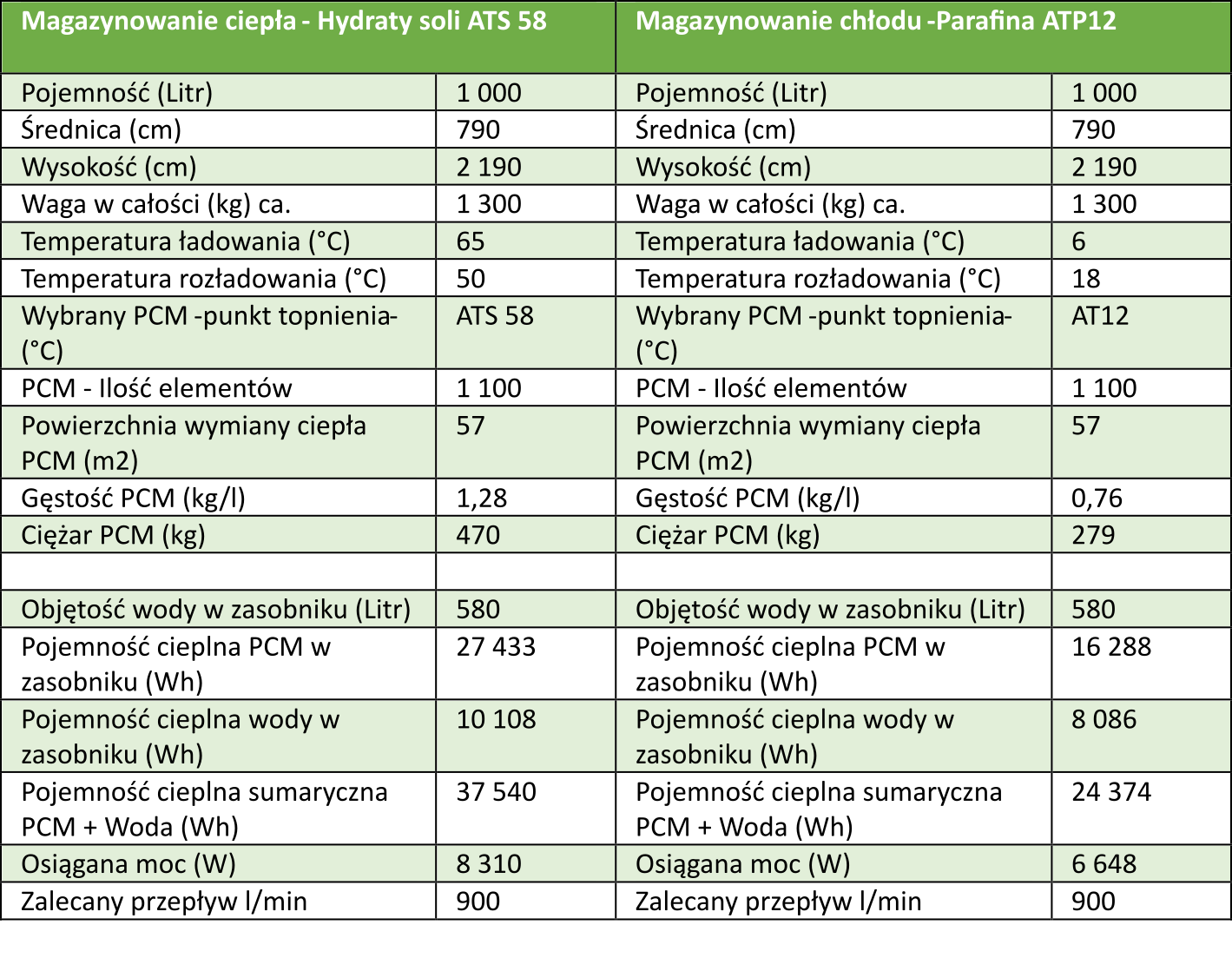
CHP Project - Cogeneration
Task: Minimize the size of the buffer tank for a smaller local district heating network served by a cogeneration unit.
- Required storage capacity 5.5 m³ volume of water.
- Local district heating network in winter with a supply of 55°C and a return solution of 45°C
Solution: Reduce the tank capacity by 30% compared to a conventional buffer tank of selected size 2500 l.
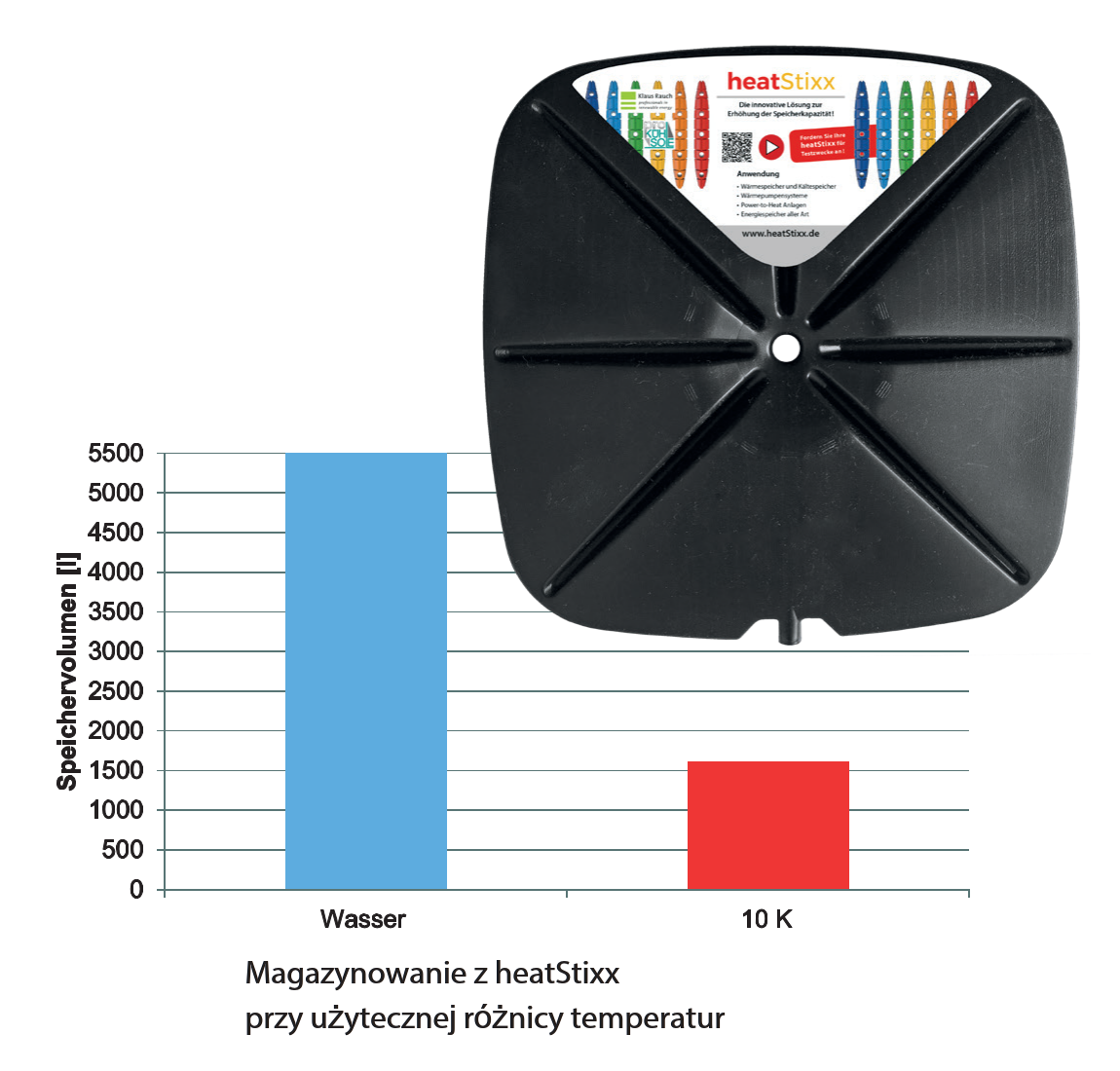
Heat Pump Project
Task: Maximize the buffer tank capacity of the heat pump to increase operational flexibility.
- Capacity 300 l
- Cooling the entire fill amount from 60°C to 50°C
Solution: Increase the storage capacity by 258%.
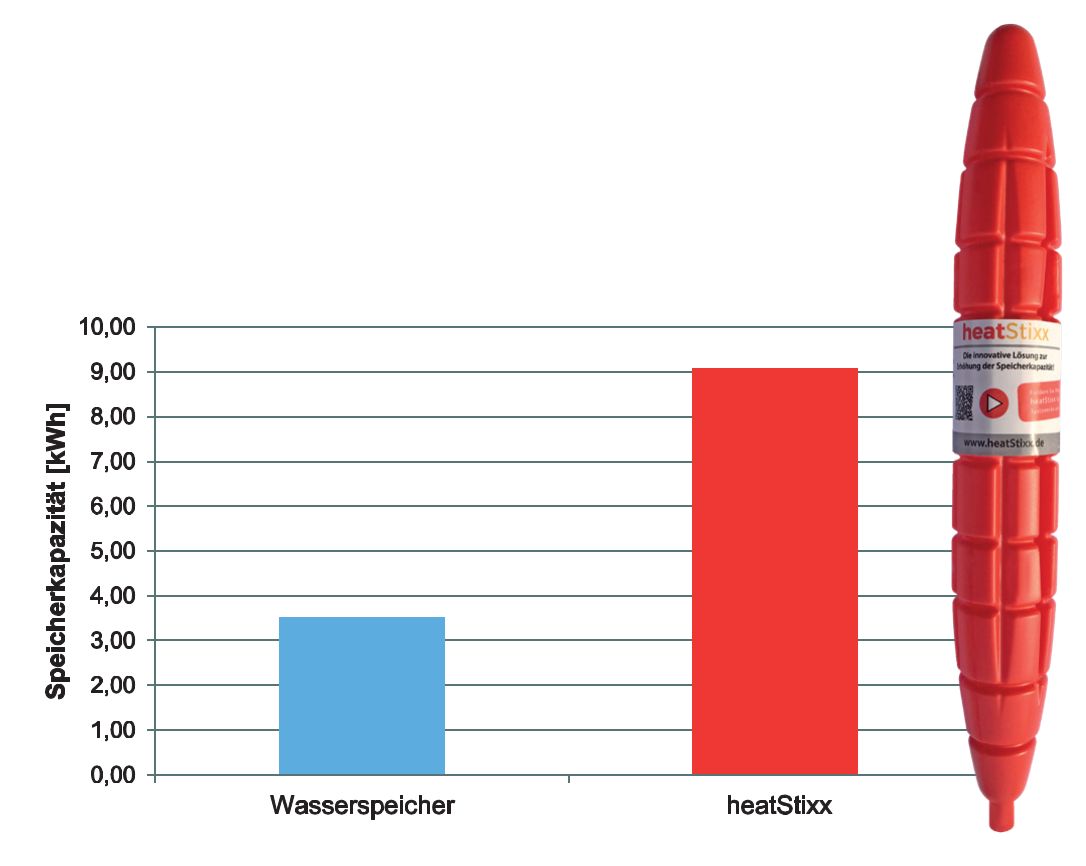
Cold Storage Tank Project
Task: Minimize the volume of water/glycol cold storage tank.
- Capacity 8000 l
- Temperature range from -5°C to 5°C
Solution: Easy implementation of the cold storage tank without costly heat exchangers and construction work, and minimizing the storage capacity to 2000 l, which corresponds to 25% of the original volume.
